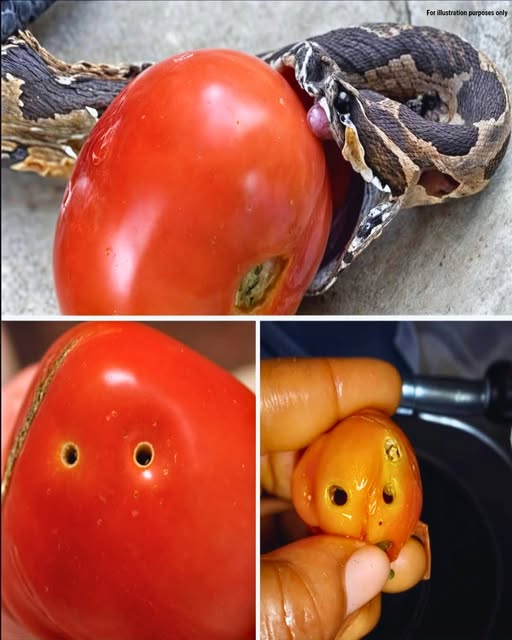If you’ve ever reached into your garden basket or grocery bag expecting a perfect, juicy tomato, only to find a mysterious hole staring back at you, you’re definitely not alone. That tiny gap in your fruit might look innocent at first, but it can feel like a personal betrayal—especially if you’ve been nurturing your plants for weeks. The good news? These holes are common and usually have a logical explanation.

While they might be unsightly and occasionally gross, understanding why they appear can help you prevent them in the future and even decide whether or not the tomato is still safe to eat. First things first, holes in tomatoes don’t appear by magic. Something caused them, and more often than not, the culprit is either a pest, an animal, or an issue with the way the tomato grew.
One of the most common reasons for holes is insects. Tomato fruitworms, hornworms, stink bugs, and beetles are frequent offenders, treating your garden like it’s an all-you-can-eat buffet. These pests chew or bore their way into tomatoes, leaving behind damage that may look small on the outside but can be far worse inside. Sometimes the surface appears nearly intact, but once you slice the tomato open, you’ll discover internal damage or even unwelcome guests still inside. Birds and squirrels are another likely cause.
While they might be adorable as they flit and scamper around your yard, they can be downright disrespectful to your tomato patch. Birds are particularly drawn to red, ripe fruit and might peck your tomatoes looking for water, especially in dry weather. Squirrels, on the other hand, might bite into a tomato and then leave it behind without finishing it, wasting your harvest in the process.
If you notice small peck marks at the top of your tomato, a bird is probably to blame. If a big chunk is missing, you’re likely dealing with a squirrel. In some cases, holes might not be caused by animals at all but rather by environmental or developmental issues. Physical damage from rough handling, sudden temperature changes, or inconsistencies in watering can all lead to cracks or deformities. One such condition is called “catfacing,” which causes misshapen fruit and can sometimes resemble bite marks or holes.
This issue is often due to cold weather during the plant’s flowering stage. Now comes the big question—can you still eat a tomato with a hole in it? The answer depends on what you find inside. If the hole is small, and the rest of the tomato looks fresh with no signs of mold, slime, or a bad smell, it’s probably safe. You can just cut around the affected area and use the rest. However, if the tomato is mushy, smells off, or has a gaping hole with visible rot or movement inside (yes, that happens), it’s better to toss it. No salad is worth that kind of risk—or trauma. To avoid finding holes in your tomatoes altogether, it’s all about prevention.
Start by checking your plants daily for signs of pests, such as chewed leaves or insect droppings. Consistent watering is another key factor—sudden dry spells followed by heavy watering can cause fruit to split, making them vulnerable to bugs and bacteria. To keep animals away, cover your plants with lightweight netting or garden fabric. It’s like putting your tomatoes in a safe without actually harming wildlife.
Companion planting can also help—herbs like basil, garlic, and flowers like marigolds can deter unwanted bugs while enhancing your garden’s scent. Keeping your garden clean by removing fallen fruit, dead leaves, and weeds can reduce hiding spots for pests. If you do find a hole, don’t panic. Examine the tomato for bugs or signs of rot, cut it open to inspect the inside, and decide whether it’s salvageable. Check nearby tomatoes and plants for similar damage, and take appropriate steps—remove pests, fix your watering schedule, or set up some netting. A holey tomato may be disappointing, but it’s not a lost cause. With a little attention and care, your tomatoes can bounce back, and your garden can thrive. And hey, if a few tomatoes go to the birds or squirrels, think of it as a reluctant donation to your backyard ecosystem.





